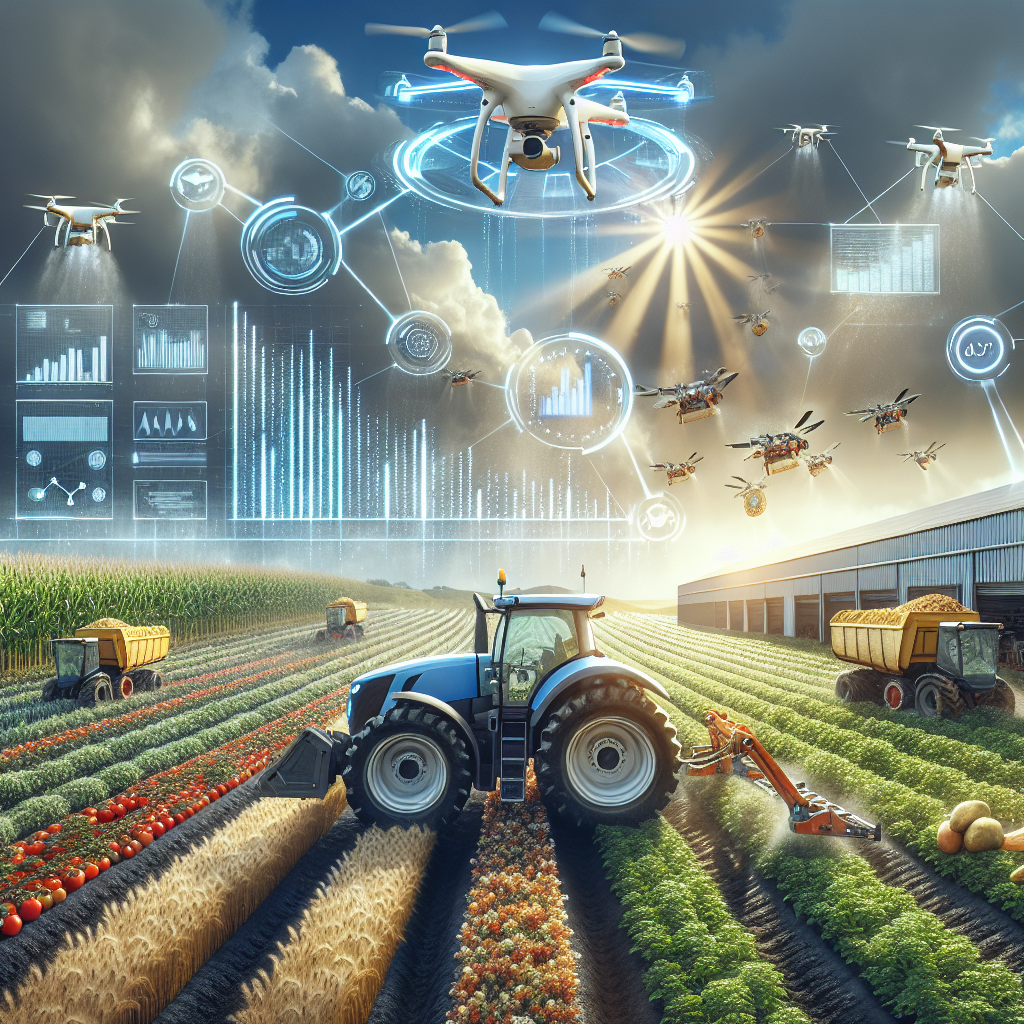In recent years, the agriculture industry has seen significant advancements in technology, with the integration of artificial intelligence (AI) playing a crucial role in transforming the way food is distributed. AI has the potential to revolutionize the entire food distribution process, from farm to table, by improving efficiency, reducing waste, and ensuring food safety.
One of the key areas where AI is enhancing food distribution in agriculture is in the optimization of supply chains. By analyzing vast amounts of data, AI algorithms can predict demand, optimize routes, and streamline logistics, ensuring that perishable goods are delivered to their destination in a timely manner. This not only reduces the risk of food spoilage but also minimizes transportation costs and carbon emissions.
Furthermore, AI-powered sensors and monitoring systems are being used to track the quality and condition of food products throughout the distribution process. These sensors can detect changes in temperature, humidity, and other factors that may affect the freshness of the food, allowing distributors to take immediate action to prevent spoilage.
Another way AI is revolutionizing food distribution in agriculture is through predictive analytics. By analyzing historical data and trends, AI algorithms can forecast future demand for specific food products, enabling distributors to adjust their inventory levels and distribution strategies accordingly. This helps to reduce food waste by ensuring that the right amount of food is produced and distributed to meet consumer demand.
AI is also being used to improve the traceability of food products, providing consumers with detailed information about where their food comes from and how it was produced. By using blockchain technology, distributors can create a transparent and secure record of each step in the supply chain, from farm to table, giving consumers confidence in the safety and quality of the food they are purchasing.
In addition to enhancing efficiency and reducing waste, AI is also helping to address labor shortages in the agriculture industry. By automating routine tasks such as sorting, packaging, and labeling, AI-powered systems can free up human workers to focus on more complex and value-added activities, such as quality control and customer service.
Overall, the integration of AI in agriculture is transforming the way food is distributed, making the process more efficient, sustainable, and transparent. By harnessing the power of AI, distributors can ensure that fresh, safe, and high-quality food products reach consumers in a timely manner, helping to meet the growing demand for food in a rapidly changing world.
FAQs:
Q: How does AI improve food distribution in agriculture?
A: AI improves food distribution in agriculture by optimizing supply chains, monitoring the quality of food products, predicting demand, enhancing traceability, and addressing labor shortages.
Q: What are some examples of AI technologies used in food distribution in agriculture?
A: Some examples of AI technologies used in food distribution in agriculture include predictive analytics, sensors and monitoring systems, blockchain technology, and automation of routine tasks.
Q: How does AI reduce food waste in the distribution process?
A: AI reduces food waste in the distribution process by predicting demand, optimizing routes, monitoring the quality of food products, and ensuring that the right amount of food is produced and distributed to meet consumer demand.
Q: How can consumers benefit from AI-enhanced food distribution in agriculture?
A: Consumers can benefit from AI-enhanced food distribution in agriculture by having access to fresh, safe, and high-quality food products, as well as transparent information about where their food comes from and how it was produced.
Q: What are some challenges associated with implementing AI in food distribution in agriculture?
A: Some challenges associated with implementing AI in food distribution in agriculture include the initial cost of investment, data privacy and security concerns, and the need for specialized skills and training to operate AI-powered systems.

